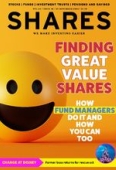Archived article
Please note that tax, investment, pension and ISA rules can change and the information and any views contained in this article may now be inaccurate.
How to get low-cost exposure to the UK’s biggest dividends

With consumer prices hitting a 40-year high, more investors are searching for high-income instruments to try to offset the impact of inflation on their cash. The danger with picking individual stocks just for their income is high yields are usually indicative of some underlying problem with the business and are not sustainable.
The iShares UK Dividend ETF (IUKD) takes much of the legwork out of hunting for high yields, and offers diversification across a large number of different stocks so that if one or two companies cut their dividends, your income won’t be too drastically affected.
The fund tracks the performance of an index composed of 50 shares with ‘leading’ dividend yields, giving diversified exposure to the highest-yielding subset of the FTSE 100 index and the upper reaches of the FTSE 250 index.
In other words, it screens both indices by market value and automatically rejects any non-dividend-paying companies, focusing on those with the most attractive yields.
Due to the focus on dividends, the fund has a completely different look to the FTSE 100, which is most obvious from the fact that the top 10 holdings don’t include Shell (SHEL), AstraZeneca (AZN) or Unilever (ULVR), the top three stocks in the index. Instead, the top three holdings in the fund are Rio Tinto (RIO), Anglo American (AAL) and Persimmon (PSN).
The smallest stocks in the fund are Centamin (CEY), Redrow (RDW) and Jupiter Fund Management (JUP), all of which are towards the top of the FTSE 250 in terms of market value.
The 12-month trailing yield on the fund is 6.5%, almost double the 3.3% offered by the FTSE 100, and the 12-month trailing PE (price to earnings multiple) is 8.6 times against 12.7 times for the index.
Fees are low at 0.4%, meaning investors get to keep more of the yield on offer, and dividends are paid quarterly. The total return in 2021 was 23.2% against 20.7% for the FTSE 100, while for this year up to the end of October the ETF is down 8.2% against a 2% gain for the index representing a rare period of underperformance.
For investors wanting exposure to a broad selection of liquid, ‘best of’ dividend-yielding UK stocks with a low fee, a quarterly payout and scope for recovery potential, as well as somewhere to park their money until markets settle down, this fund is just the ticket.
Important information:
These articles are provided by Shares magazine which is published by AJ Bell Media, a part of AJ Bell. Shares is not written by AJ Bell.
Shares is provided for your general information and use and is not a personal recommendation to invest. It is not intended to be relied upon by you in making or not making any investment decisions. The investments referred to in these articles will not be suitable for all investors. If in doubt please seek appropriate independent financial advice.
Investors acting on the information in these articles do so at their own risk and AJ Bell Media and its staff do not accept liability for losses suffered by investors as a result of their investment decisions.
Issue contents
Feature
- Fund manager optimism starts to return as equity inflows hit 35-week high
- Finding great value shares: how fund managers do it and how you can too
- Watch out for changes to dividend and capital gain allowances
- Is the hardy US shopper starting to feel the pinch?
- How I invest: the big lessons learned from a stock-picking journey
- Emerging markets: Views from the experts
- Find out about the top performing Indonesian market
Great Ideas
News
- Are dividends in the UK banking sector safe during a recession?
- How Currys shares have charged higher ahead of key trading period
- Why Zoom woes continue as it lowers revenue guidance
- New surge in China Covid cases halts rally in Asia-related stocks and investment funds
- Signs of life appear in the UK IPO market: Grindr shares gain 330% on debut
- Hilton Food shares in freefall after second warning in two months
 magazine
magazine








